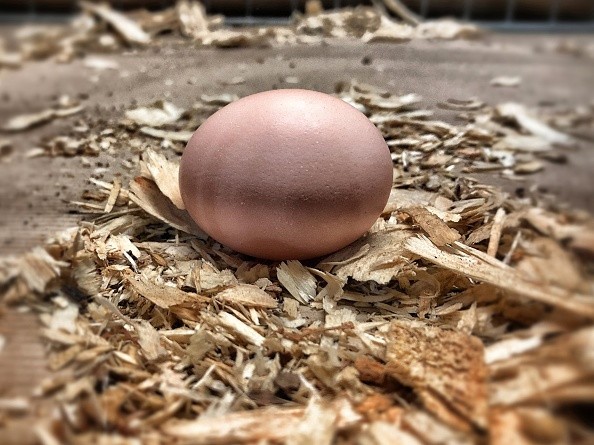The egg, a remarkable finding from the Islamic period, had been in a toilet all these years. At least its internal organ can contribute to a DNA study of early chickens.

The Egg
A chicken in Yavneh laid an egg one day a thousand years ago. That egg was never to hatch, unfortunately for that chicken's future generation. For some ground, it wound up in a cesspit in the industrial zone of the ancient city - and it sat there.
Until archaeologists from the Israel Antiquities Authority came along, carrying out a salvage unearthing in the ancient industrial zone of the central Israeli city before construction, and discovered it. Seasoned in the collection of extremely delicate matter, they managed to take out the egg from the cesspit, still intact.
IAA archaeologist Alla Nagorsky, head of this part of the salvage dig told Haaretz: "We were amazed to find it, from time to time we discover fragments of eggshells, but a complete egg is extraordinary."
DNA Analysis
All these years, the egg had evidently been preserved - don't bother cracking, it didn't decompose and rot - because it had been placed or dropped in the toilet, and was enclosed in soft waste, which produced anaerobic conditions.
And then it broke in the lab; a little crack in the base, according to the IAA's Dr. Lee Perry Gal. He said they won't get into it but on the upside, some yolk has lingered in the shell and will assist in DNA future analysis. And maybe at some stage, it would have had to be broken anyway in order to study inside of the egg, Nagorsky comforts the world.
Conservationist Ilan Naor has reinstated the shell of the egg that was laid a thousand years ago in Yavneh, the IAA added. How are you aware that the chicken lived during the Islamic period? Due to other finds in said cesspit, which was not large: 1.20 meters (around 4 feet) by 80 centimeters, and approximately 1.3 meters in height.

Eggshell Fragments
The other discoveries include three dolls comprised of bone, typical of the entire Abbasid period from the seventh century to the late 11th century, and an oil lamp. Nagorsky explains that lamp was of a kind that was only made in the late Abbasid period - around 1,000 years ago. And thusly, the chicken egg was dated to that time.
IAA's Gal, a leading expert on poultry in the ancient world said fragments of eggshell are known from ancient periods - for instance, in the City of David and at Caesarea and Apollonia. But because of the fragile shells of the eggs, hardly any complete chicken eggs have been preserved. Even at the global level, this is a very rare discovery.
Related Article : Scientists May Have Cracked the Secret Behind Different Egg Shapes
For more news, updates about ancient discoveries and similar topics don't forget to follow Nature World News!
© 2025 NatureWorldNews.com All rights reserved. Do not reproduce without permission.





